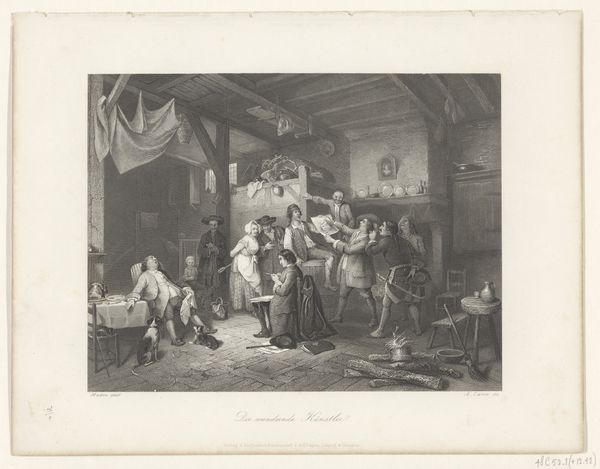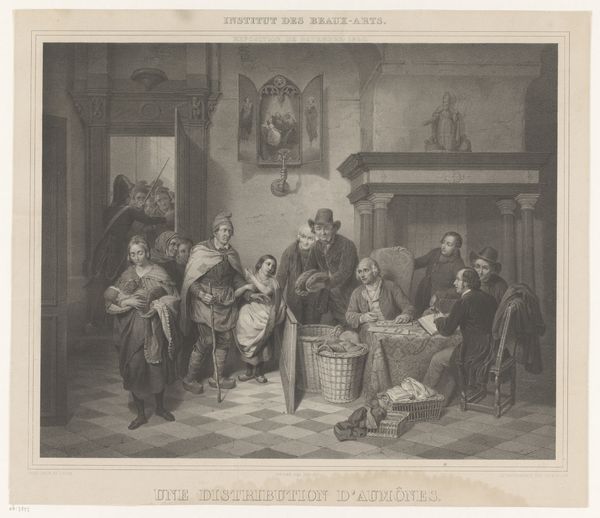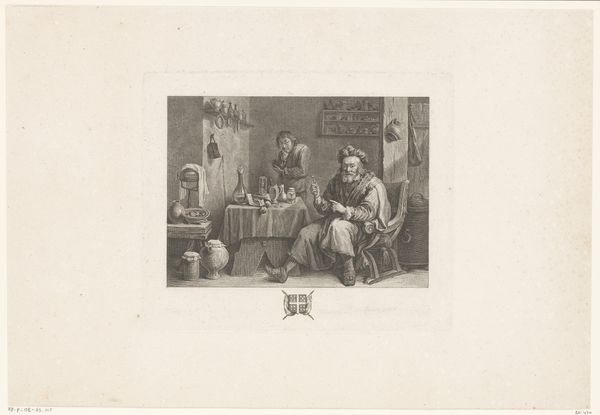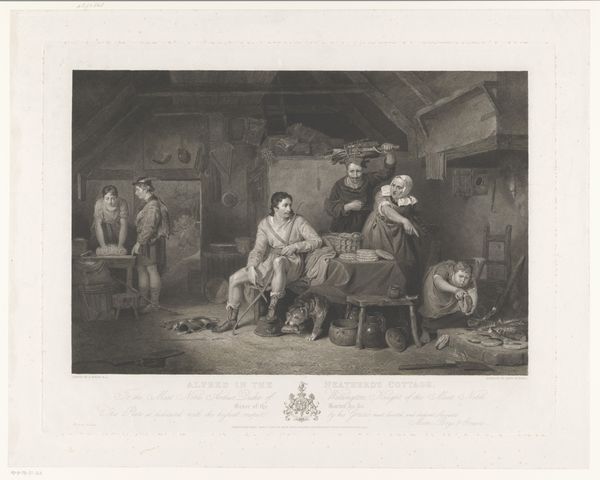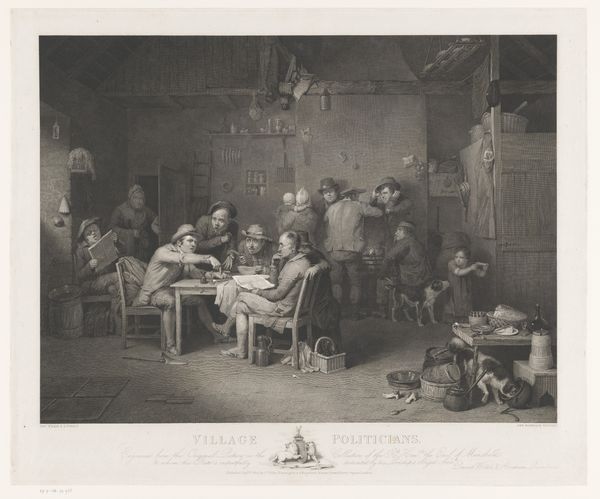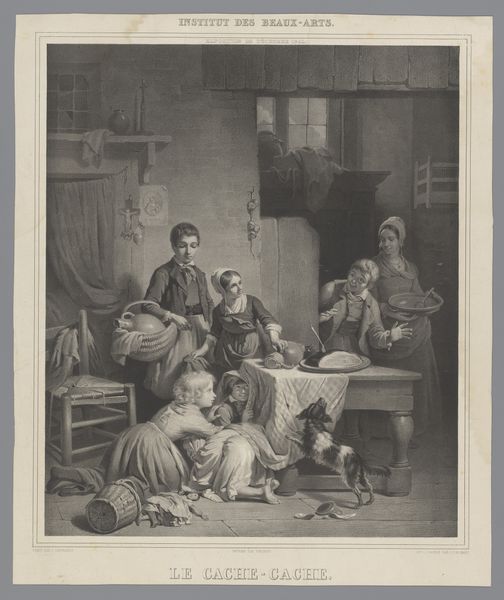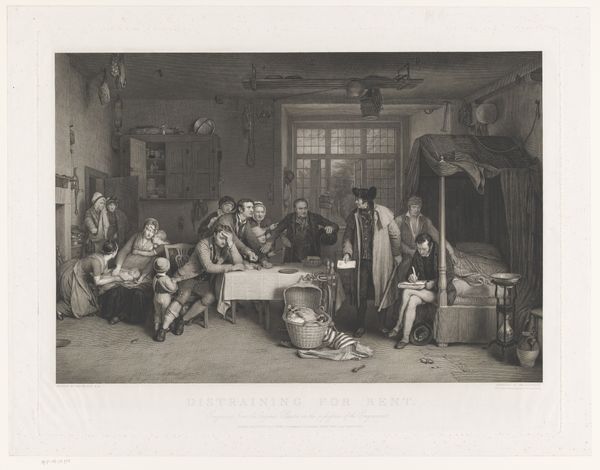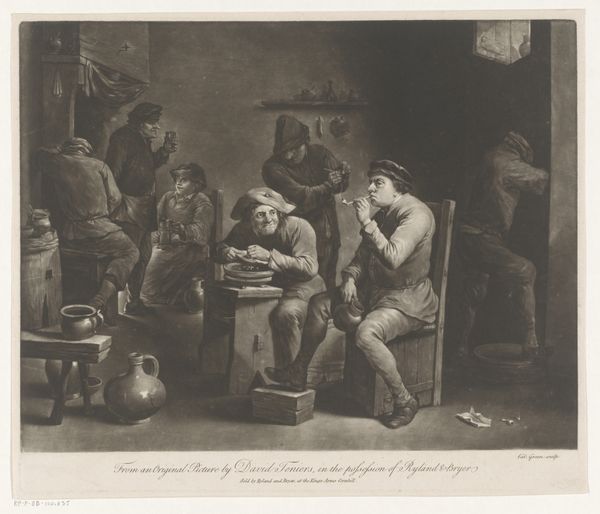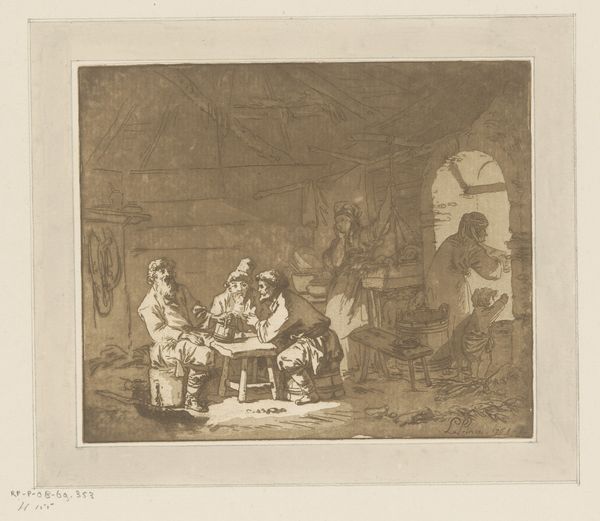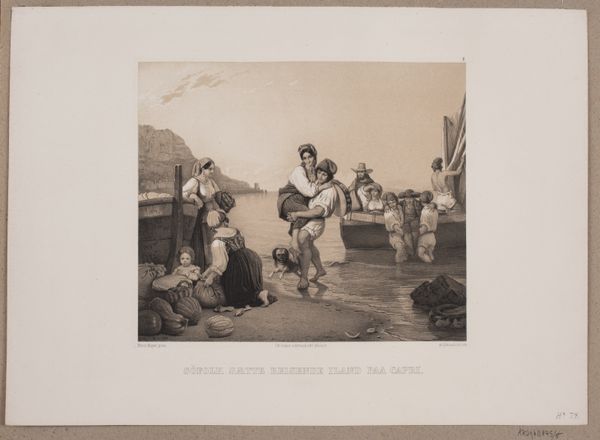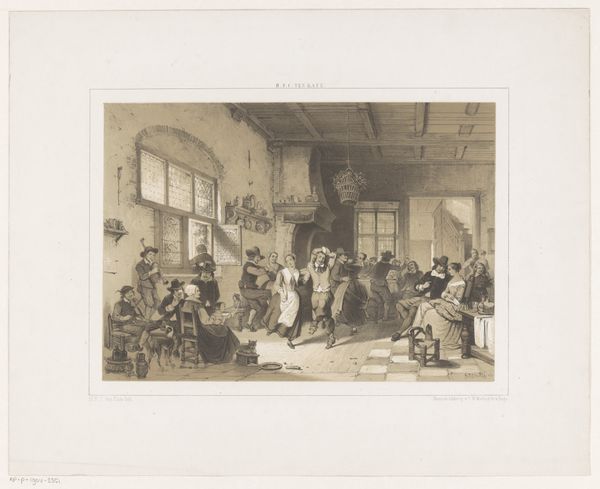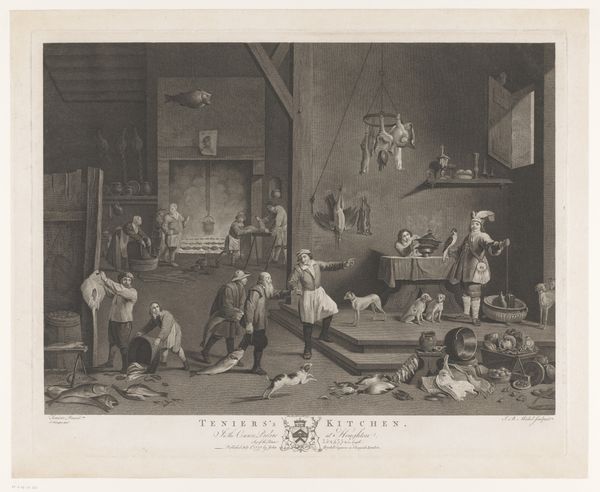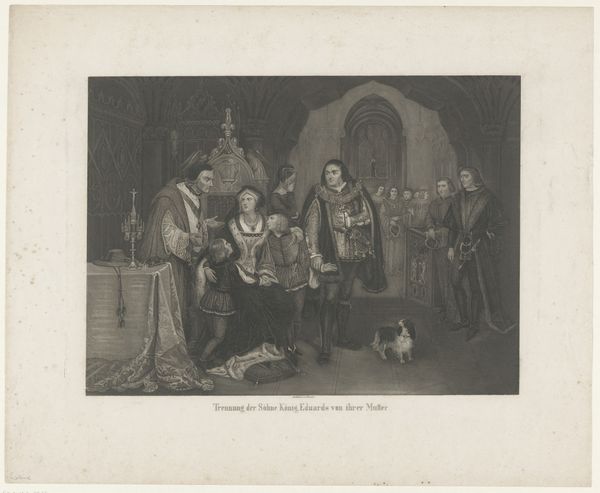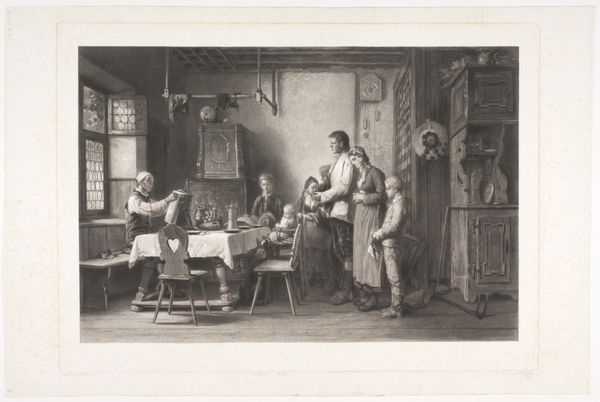
print, engraving
#
print photography
#
narrative-art
# print
#
landscape
#
figuration
#
form
#
romanticism
#
line
#
genre-painting
#
history-painting
#
engraving
#
realism
Dimensions: height 481 mm, width 602 mm
Copyright: Rijks Museum: Open Domain
Curator: This is William Ward’s 1798 engraving, "Familie verwelkomt de vader thuis na een storm," or, as it's also known, "Morning after the Storm." What's your initial take? Editor: Overwhelming relief, mostly. The whole scene glows with it, like a muted dawn after some terrifying night. It feels intimate, familiar, even though it depicts a specific historical moment. I wonder what the storm really represents. Curator: That's perceptive. Engravings like this, printed and distributed widely, played a key role in shaping sentimental ideals around family and domesticity during the late 18th century. The composition, with its return-of-the-provider motif, taps into anxieties about social stability and economic vulnerability. Note how the artist employed mezzotint to give a tonal palette. Editor: It works wonders; the light and shadow feel so dramatic for something printed. I'm caught up in the details: the exhausted sheep huddled together, the children's varied expressions... Are they drying laundry? Did everything get soaked? And, of course, the father removing his coat... There's a vulnerability in that gesture, right? As if the weight of responsibility is physically lifting from him. Curator: Indeed, it humanizes him. And yes, it looks like the children are drying fabrics. These visual clues draw us into a broader narrative, suggesting both hardship and resilience within this working-class family. I'm curious about the market for prints such as this – they obviously had an impact in representing what constituted "home." Editor: And "family." It's so…posed, yet emotionally convincing. I think it goes beyond the mere mechanics of print production, wouldn't you agree? Something about this image still hits me. Perhaps we're hardwired to react to such moments. It's a deep image and well printed. Curator: Maybe so. For me, the beauty resides precisely in understanding how material conditions shape that sentimental appeal. I always keep in mind, what labor produced this object and for what audience was it marketed and consumed. Editor: Alright, Materialist. So perhaps this artwork offers comfort through its portrayal of resilience and that primal theme of survival against the odds and the love in between. Curator: Agreed! Considering the production history does deepen my insight in to its original viewers.
Comments
No comments
Be the first to comment and join the conversation on the ultimate creative platform.
